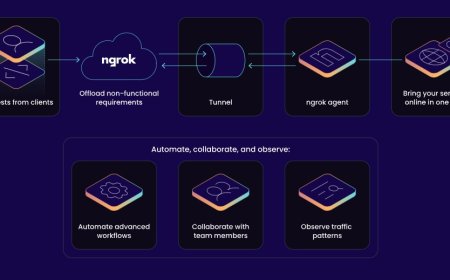Understanding Types of Data Transmission: Serial, Parallel, Synchronous, and Asynchronous
In this blog, we explore the different types of data transmission, including Serial, Parallel, Synchronous, and Asynchronous transmission methods. Each type of transmission is crucial in data communication, with distinct features, advantages, and ideal use cases. Learn how these transmission types affect speed, accuracy, and reliability in various systems, from simple electronic devices to complex networks.
Introduction to Data Transmission

Data transmission refers to the process of sending and receiving data between devices or systems. The method chosen affects the speed, efficiency, and reliability of data communication. There are four main types of data transmission: Serial, Parallel, Synchronous, and Asynchronous. Each type has unique characteristics and is suited to specific scenarios. Let's dive deeper into how these transmission types work.
Serial Transmission

In serial transmission, data is sent one bit at a time over a single communication channel. The bits are transferred sequentially, with each bit following the previous one.
Features:
- Only one communication line is required.
- It is slower than parallel transmission but more reliable over long distances.
Advantages:
- Simple wiring (one channel).
- Effective for long-distance communication.
- Less chance of data corruption due to signal interference.
Disadvantages:
- Slower compared to parallel transmission.
- May require additional time for error-checking.
Example:
Serial transmission is commonly used in USB devices and communication between computers and external hardware.
Parallel Transmission

In parallel transmission, multiple bits are sent simultaneously over several channels, one for each bit. This allows for faster data transfer.
Features:
- Multiple communication lines are used (usually 8, 16, or 32).
- Suitable for short-distance transmission due to the complexity of wires.
Advantages:
- Much faster than serial transmission for short distances.
- Ideal for sending large volumes of data quickly.
Disadvantages:
- Requires more wires and is more expensive.
- Can cause synchronization issues and signal interference over long distances.
Example:
Parallel transmission is used in older systems like internal computer buses and printer interfaces (parallel ports).
Synchronous Transmission

In synchronous transmission, data is sent in a continuous stream, synchronized by a clock signal. Both the sender and receiver must be in sync for the data to be correctly interpreted.
Features:
- Uses a clock signal to maintain timing between devices.
- Data is transmitted in large blocks (frames).
Advantages:
- Efficient for large data transfers without gaps between bits.
- Fast and reliable due to synchronization.
Disadvantages:
- Requires precise timing and more complex hardware.
- If synchronization fails, data errors can occur.
Example:
Synchronous transmission is widely used in high-speed network communication, such as Ethernet and broadband services.
Asynchronous Transmission

In asynchronous transmission, data is sent one byte at a time, with start and stop bits added to indicate the beginning and end of transmission. No clock signal is required.
Features:
- No synchronization between sender and receiver is needed.
- Data is sent in small, manageable chunks.
Advantages:
- Simple and cost-effective.
- Suitable for low-speed communication over long distances.
Disadvantages:
- Slower due to the need for start and stop bits.
- Overhead is higher compared to synchronous transmission.
Example:
Asynchronous transmission is used in communication methods like older RS-232 serial ports and in modems.
Conclusion
Understanding the different types of data transmission helps you choose the right method for your communication needs. Serial transmission is ideal for long distances, while parallel transmission works best for short, high-speed transfers. Synchronous transmission ensures efficient, continuous data transfer, whereas asynchronous transmission is simple and reliable for slower, intermittent data communication.
Selecting the appropriate type of transmission can significantly impact the performance, speed, and reliability of your data transfers.
What's Your Reaction?


































![2024 Social Media Image Sizes for All Networks [CHEATSHEET]](https://blogs.amospeter.co.ke/uploads/images/202406/image_430x256_666ad3fcd2380.jpg)
















